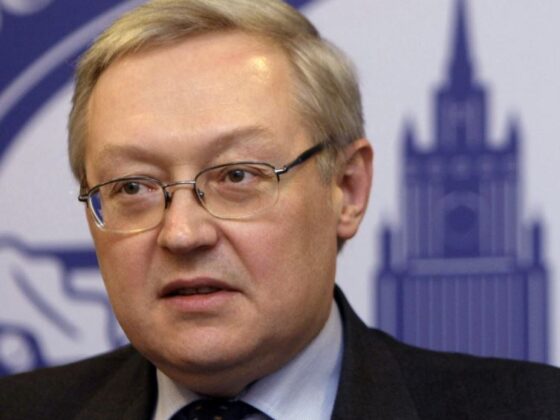What is happening in Kyiv is fascinating but fairly understandable and densely covered. The situation in Lugansk and Donetsk, on the other hand, is less clear. I decided to do a little research of my own, which involved contacting people I know on a personal level.
I talked to about two dozen people, including family members—since the 1920s, part of my own family have lived in Lugansk and also in the small towns of Yenakievo and Krasnodon (the latter is about 20 km from the Russian border).
My interviewees are from the middle class: retirees with higher education, medical doctors, a businessman, and several unemployed or underemployed persons who can be considered declassé middle class—a rather typical personage in former Soviet provincial towns.
I must say that in this study I am emotionally involved. I am worried for the lives of all these people whom I have known for years.
What Did I Learn?
People in these areas feel a sense of alienation that is now aggravated by chaos. They are generally puzzled and their narratives are full of contradictions.
I did not find a single supporter of Kyiv’s Euromaidan movement—not even among the few who had supported the Orange revolution a decade earlier. (I did some surveys in this same region during the Orange revolution… one person told me at that time: "I am one of those 3% who voted here for Yushchenko, but please, make sure my parents never hear this.")
These days, to the interviewees, Kyiv appears far removed and generally aloof, if not parasitical. They see the incomes and lifestyles in Kiev as fabulous and scandalous. (Well, this is a somewhat universal sentiment, this is the way that many “depressed” provincial towns anywhere see their nation's capital and big cities.)
At the same time, I could not find a single supporter of the separatists. No one even knew a separatist or a separatist-supporter.
However, this could be a social illusion. One respondent said that her friend was among the people killed during one of the rocket salvos. But then she said, "But, come on, what kind of separatists could they be! Just local people reporting to work."
The separatists are portrayed as emerging out of nowhere. I heard, "We went to the dacha to gather strawberries — and guess what? Someone dug trenches in our patches!"
The separatists are portrayed as alien and strange. I was told, "They wear long wild beards. Would any of our guys have such a grandfatherly beard?!"
Someone said to me, "Maybe half of them are Chechens. Whoever sent them here?”
The talk of mysterious Chechens was a persistent parallel to the 1990s talk of Ukrainian nationalists and Baltic snipers in Chechnya during that conflict.
Nobody I talked to said they had actually seen a Chechen fighter, but everyone said that the presence of exotic mercenaries was common knowledge and that they disrupt local life violently and mercilessly.
I was told, "These militants (opolchentsy), half of them Chechens, burst through the apartment door at Natasha's place and told her to get out because they needed to shoot at the border guards across the yard. It's crazy!"
The plane bombing in downtown Lugansk was blamed on the separatists, with an interviewee telling me, "They fired on it from the park right behind the building."
Curiously, the border guards elicit sympathy — perhaps because they are local or because they did not start any of the disturbances.
The Ukrainian troops and National Guards are seen with suspicion because they are not local. The National Guard in particular is treated with derision. They are seen as penniless riff-raff from western Ukraine who failed to get construction jobs in Europe and instead took this new well-paying "job." Admittedly, nobody I talked to actually saw anyone from the National Guard.
Yet, to my surprise, I detected somewhat low hostility toward the central government of Ukraine. From what I was told, it seems that citizens have their grievances but mainly wish to be left in peace.
The people have food, water is running, and the electricity works. But there are very few cars in the streets, and no expensive cars—these, especially SUVs, tend to get “commandeered.”
People tend to stay in their apartments because there is no way of easily leaving the area, or because they hope the conflict will pass soon, or because they are guarding their dwellings.
Practically all the people I spoke with said that they do not watch TV. This is because they are fed up with what they see and hear and they do not trust anyone. Many feel that their town is depicted in the media as much scarier than it actually is. I was told, "There are shootings only over there, taxi drivers refuse to go there, but otherwise people go to work." (None of my interviewees go to work these days.)
I could not find any of the coal miners I used to know. They were often angry (and often drunk). Where are they now and what are they doing?
I found out that one family had moved to “safety” in Russia (they used to work there).
What Can I Conclude?
In general, my feeling is that the people in Ukraine’s east are the “silent majority” (obyvateli) who suddenly found themselves in the midst of strange and scary events whose gravity and magnitude they fail to comprehend or can explain. Everyone hopes the conflict will end soon and that life will get back to normal ("or the strawberries will perish this year"). On the other hand, to me, the picture painted had a touch of Grozny in the first days of the1994 war. I pray I am wrong.










